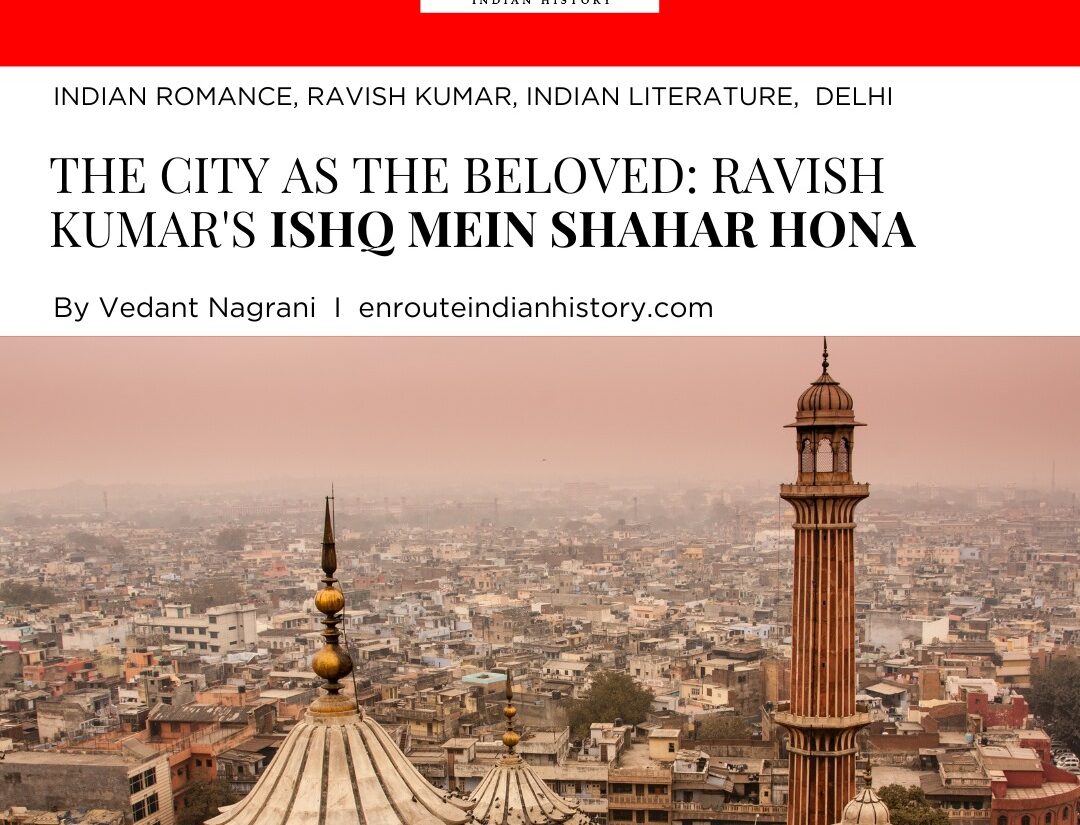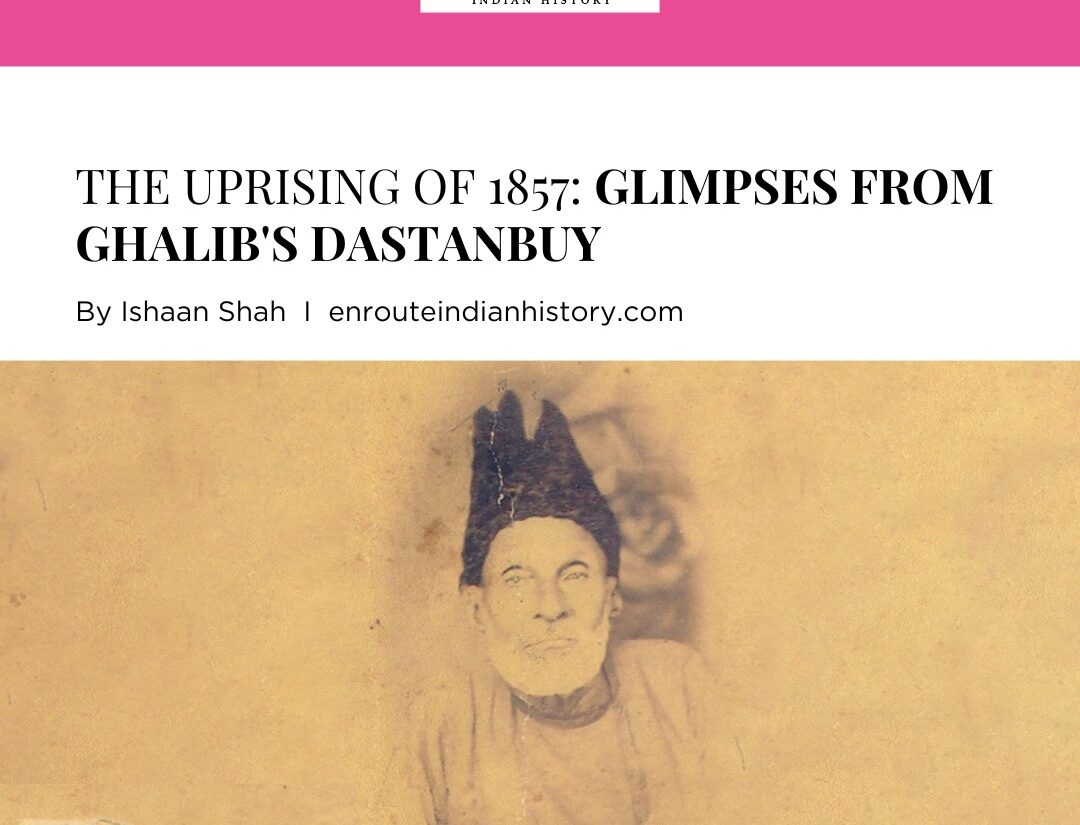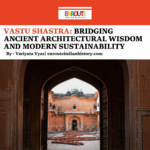The City As The Beloved- Ravish Kumar’s Ishq Mein Shahar Hona
- EIH User
- February 19, 2024

Though often assumed to be so, cities are not mere spaces to be inhabited. Cities also have a soul of their own and not only do we play a major role in developing these cities the way they are being developed but also in developing and affecting our lives by their very existence and intricacies. In many literary works, cities are not mere spaces but complete characters in their own ways. Similarly, in Ravish Kumar’s micro-story collection Ishq Mein Sheher Hona, the city plays an omnipresent character as the poet traces the love lives of Delhiwallahs. Moreover, the city itself becomes the beloved and the act of loving in Delhi also becomes an act of loving Delhi. This essay examines the character of the city as the beloved in Ravish Kumar’s micro-stories and explores the many social, psychological and political intricacies of loving in Delhi and how the very act of loving is inseparable from the city.
Cities and literature share a very intimate connection since time immemorial. In the Renaissance age, Florence was the city of change and consequently the favourite city for authors. In the modern age, Paris occupied central attention in literature. In works of Realist writers such as Fyodor Dostoevsky, the city became a character in its own respect as its landscape represented the sensescape of the protagonist, a characteristic most visible in his 1866 novel Crime and Punishment where the dark and dreary world of St. Petersburg also acts as a symbol for the dark and existential mental space of Raskolnikov, the protagonist. The city has also been an important figure in literature for other realist authors such as Charles Dickens.
In Urdu literature, there exists a special genre of literature called Shahr-e-ashob (The city’s misfortune) that constituted narrative poems from the 16th to 19th century, lamenting the condition of a city due to socio-political changes. The city of Delhi has been an important figure in these poems with poets such as Mir Taqi Mir and Mirza Ghalib having written several poems lamenting the economic and political conditions of Delhi, respectively. Though the genre of Shahr-e-ashob declined in the 20th century with a renewed focus on revolutionary and anti-imperial poems, the tradition of literature on Delhi continued with Indian poets writing about Delhi even in English. Poets such as Agha Shahid Ali and Akhil Katyal have also written several poems on Delhi. Ravish Kumar’s Ishq Mein Shahar Hona further contributes to literature on Delhi. His micro-stories revolve around protagonists resembling the figure of a flaneur as they are in love not only with their beloved partners or love interests but also the city of Delhi. Their expression of love is inseparable from their expression of love for the city. The writer himself acknowledges this in one of his micro-stories:
देखो, आश्रम जाम की क़सम। बारिश से बचने के लिए जिस फ़ुटब्रिज़ के नीचे तुम छुपे थे, उसकी क़सम। मूलचन्द अंडरपास के अँधेरे में पकड़ा था हाथ मेरा, उसकी क़सम, दिल्ली हाट में मेरे चम्मच से तुमने खाई थी आइसक्रीम, धौलाकुआँ के चाइना बॉल में कऩ्फ्यूशियस की बातों में हम कितना खो गए थे, कॉलेज से मॉल रोड पर आते ही लगता था कि दिल्ली का आँगन खुल गया है। बस एक ही गुज़ारिश है—हमारे प्यार से इस शहर को कभी जुदा मत करना।
See, Ashram traffic’s promise. The promise of the footbridge under which you were hiding to save yourself from the rain. The promise on the darkness of Moolchand underpass in which you held my hand, on the Dilli Haat where you ate icecream with my spoon, in Dhaula Kuan’s China Bowl we were so lost in the words of Confucius that when we reached Mall Road from college it felt that the courtyard of Delhi has opened. I only have one request from you- may you never separate our love from this city.
As evident from the quoted micro-story, Ravish’s stories involve a heavy usage of imagery from popular and underrated spots in Delhi. Many of his stories use the imagery of flyovers, footbridges, and the Mall Road. However, these love stories are no ordinary love stories for they not only celebrate love, Delhi, and the act of loving in Delhi but also undertake a broader perspective as, unlike many stories, they explore love in an active engagement with politics and the problems modern couples face in love. Many stories in the book explore the rather contradictory nature of love in Delhi as they celebrate the freedom that comes with the lack of identification in such a big city yet with the restrictions of constant surveillance in the form of police officials, fellow pedestrians, and so on. The lovers in these stories find escape in Delhi yet the poet simultaneously reflects on how one can never find escape in such big cities. The stories in the collection are highly democratized as they not only touch upon the lives of couples but also the love lives of students in Mukherjee Nagar and universities such as the University of Delhi.
Though often misunderstood to be otherwise, love is inseparable from politics- the personal and the political cannot be separated. Ravish Kumar, a journalist, is aware of the inseparability of the two as he reflects on politics while talking of love in a very organic manner as he also acknowledges and predicts the possible criticism of his stories that his love stories are too political. In many of his stories, Jantar Mantar, the figure of Anna Hazare, Mahatma Gandhi, JNU, prisons, Ramleela Ground, and statues of Ambedkar are recurring images and references symbolic of dissent. Published in 2015, these stories also reflect on the precarious political conditions of the era that still remain as relevant today, if not more. The following micro-story illustrates the relationship between love and politics:
जन्तर-मन्तर पर नारे लगाते हुए दोनों क़रीब होने लगे। लगा कि प्रेम को ज़िन्दगी का मक़सद मिल गया। अपने माँ-बाप के आतंक से त्रस्त दोनों झूमने लगे। तीन दिनों बाद जब उस भीड़ में अपने मिडिल क्लास माँ-बाप को देखा तो दोनों भाग लिये। वह अब अन्ना को गरियाने लगी। इंडिया गेट पर आइसक्रीम खाते ही कंट्री चेंज करने का फितूर जल्दी घर पहुँचने की रणनीति में बदल गया।
Shouting slogans at Jantar Mantar, the two started getting closer. It was as if love had achieved the goal of life. Tired of their subjugation at the hands of their parents, both started swinging. Three days later when they saw their own middle-class parents in the same crowd, they also became a part of it. Now they started ranting at Anna. The desire to change the nation while eating ice cream in the India Gate soon changed into the politics of reaching home.

An illustration of the above-quoted story by Vikram Nayak.
It might be too far-fetched a comparison to be drawn yet, Ravish Kumar, like Faiz Ahmed Faiz, is aware of the love and the revolution being identical figures, hardly different from each other, let alone them being separable. Beautifully illustrated by Vikram Nayak, in these stories, love in the city becomes love for the city and vice versa. His stories in this collection are not merely odes to his lover but also odes to the city itself and odes to revolution. In these stories, lovers meet in flyovers, narrow by-lanes and alleys, and protests as they struggle in their pursuit to spend some moments of peace in such a fast-moving city. The writer does not, however, engage in any romanticization of either his city or his beloved as he acknowledges and accepts the flaws of both in his poem which makes his love seem natural and organic rather than an over-romanticization of the city which is often the case with several literary works on Delhi and love. In one of these stories, the writer himself defines what it means for a city to happen in love:
जान-पहचान की जगह से अनजान जगहों में जाना ही इश्क़ में शहर होना है।
To go from a well-known place to unknown places is what it takes for a city to happen in love.
References
Kumar, Ravish. Ishq Mein Shahar Hona. Rajkamal Prakashan, 2015.























